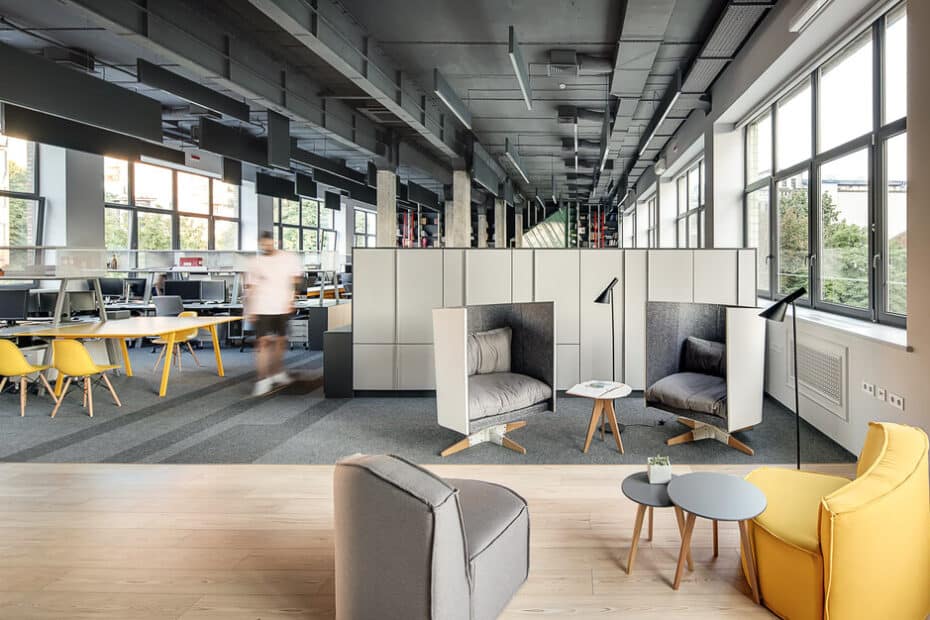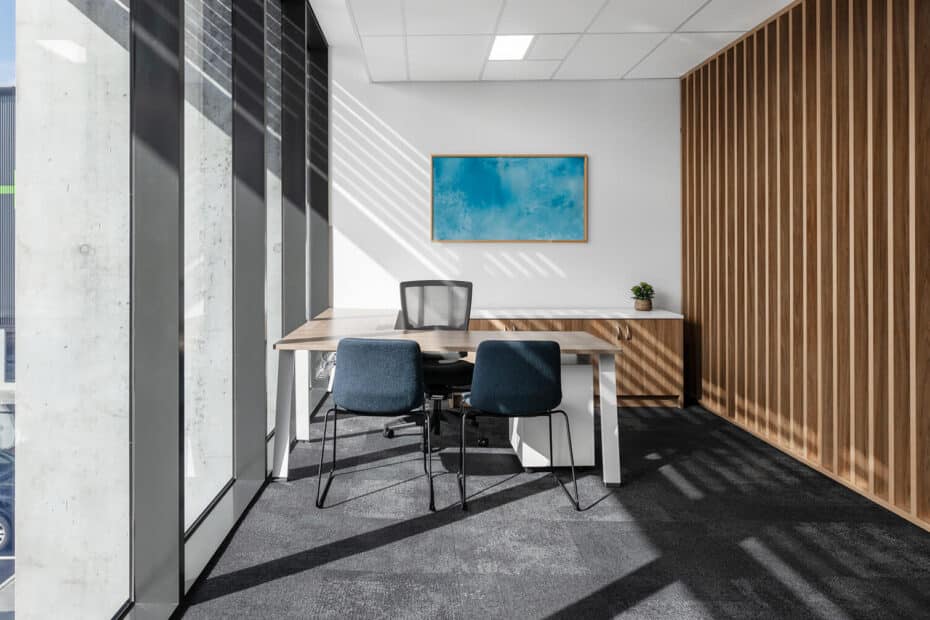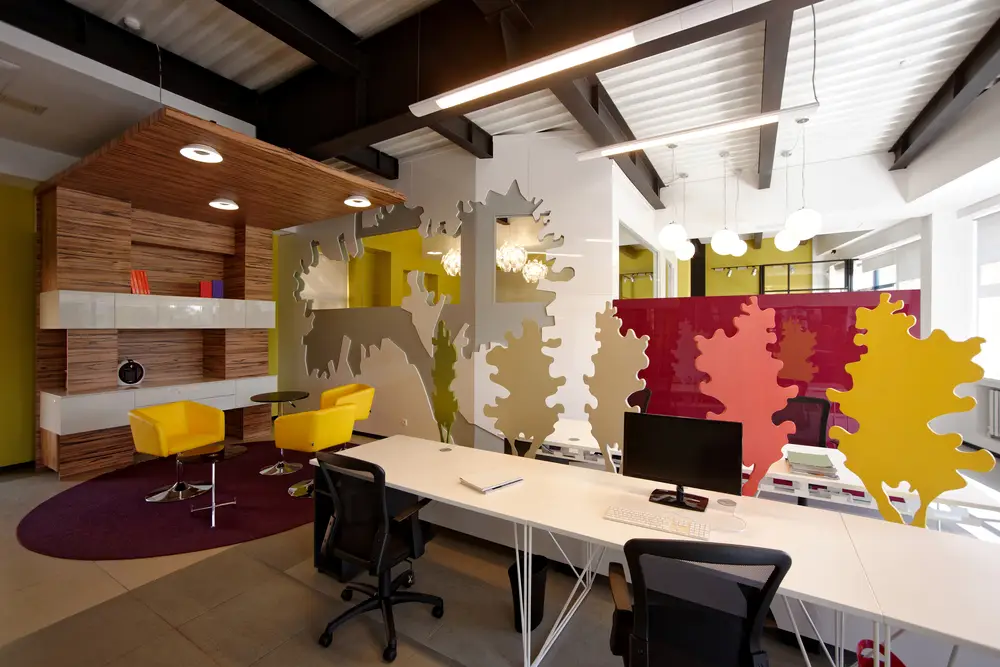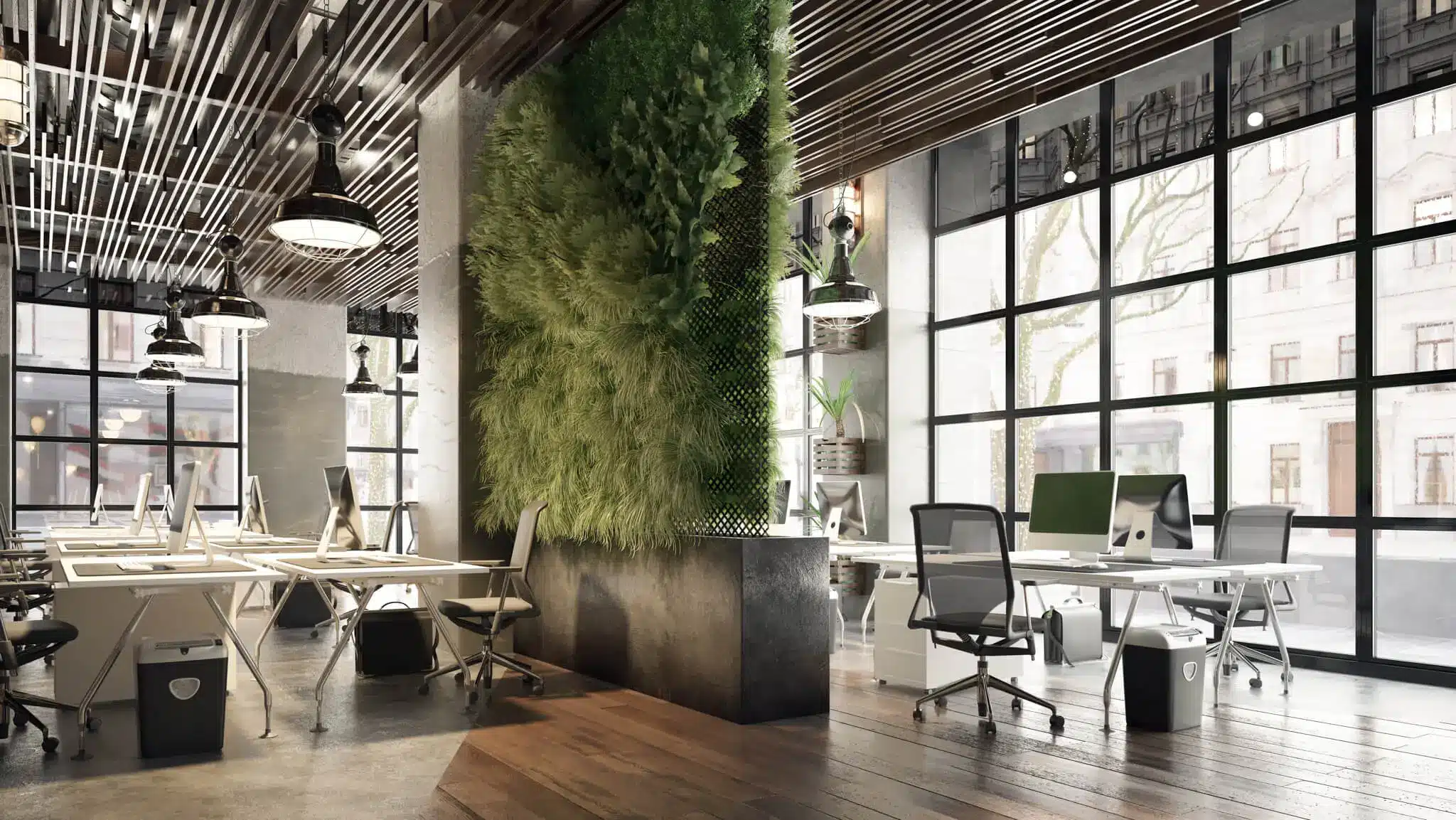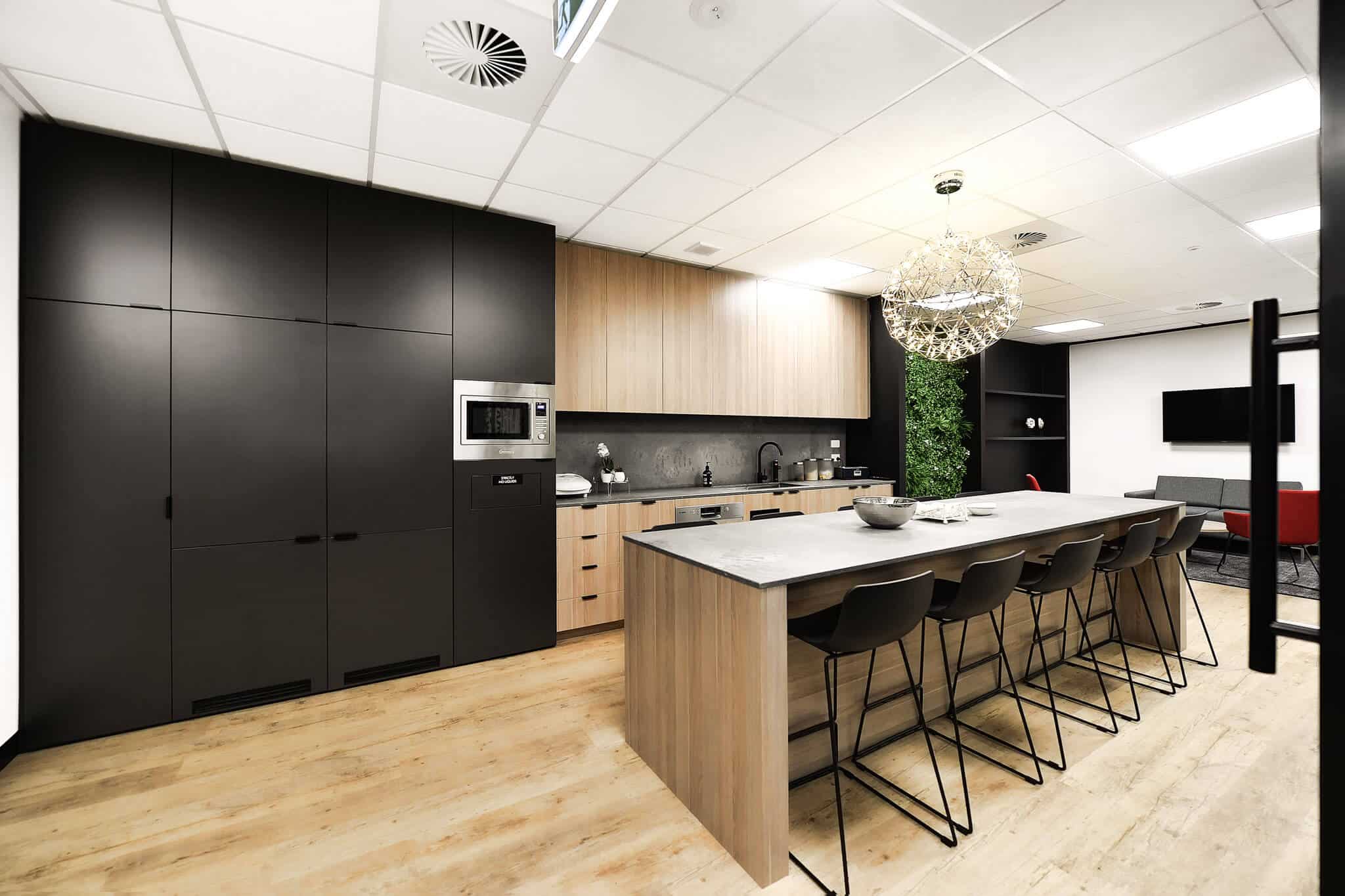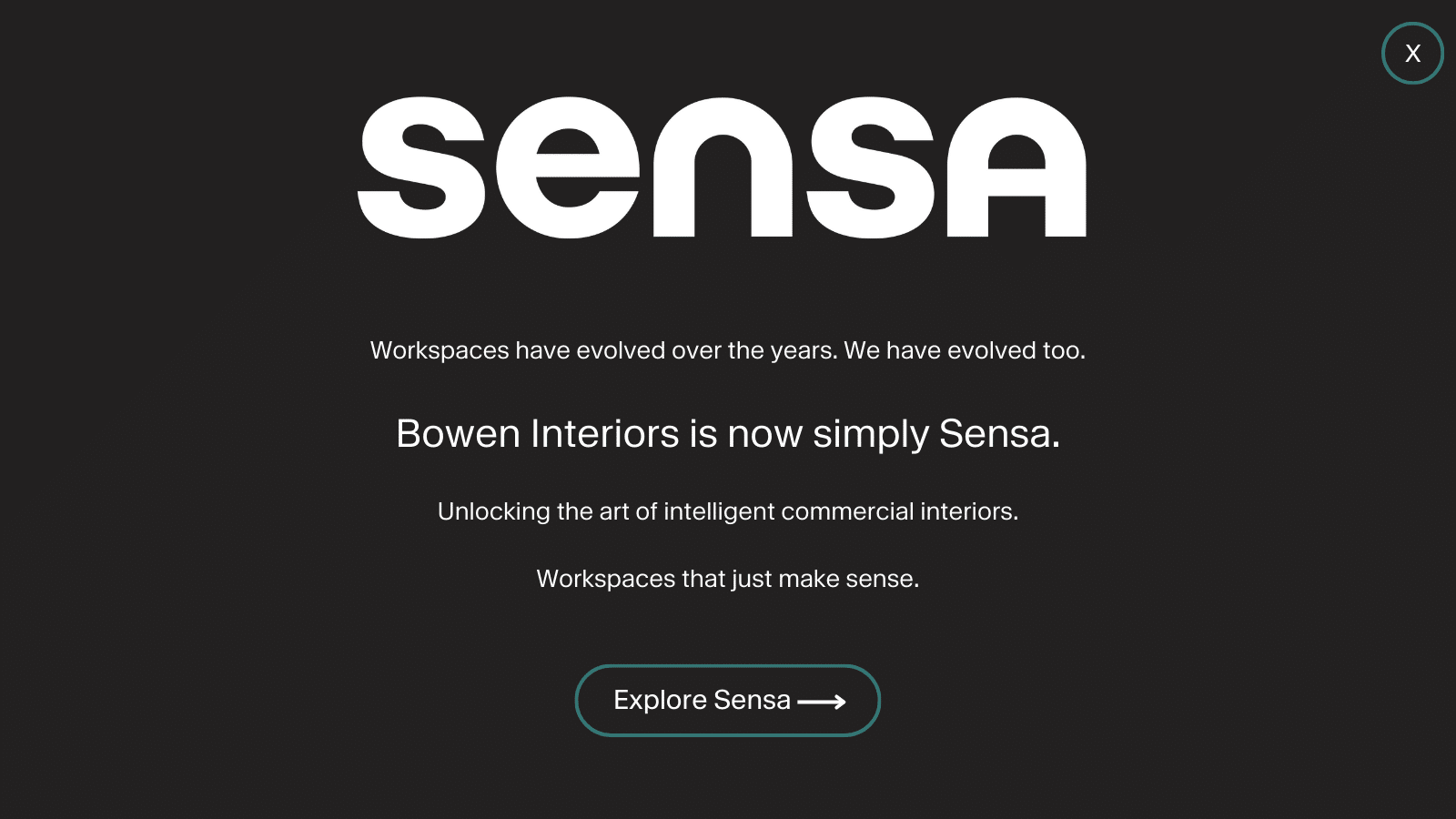1.1 Significance of workplace strategy
Starting an office renovation without a workplace strategy is like starting to drive without a destination. You can end up lost and out of fuel.
Workplace strategy isn’t just about aesthetics, it’s more like a GPS route that aligns the physical space with your company’s broader objectives. It gets you where you need to be!
A strategic approach ensures that every design decision resonates with the company’s mission and values, as well as its business goals and cultural intention.
By prioritising strategic planning from the outset, you can navigate the complexities of office design with clarity and purpose.
A workplace strategy means you’ll make informed choices that drive productivity, collaboration, and well-being in the long run.
1.2 Align workplace strategy with business vision
Every brand has a unique essence, a kind of DNA that sets it apart. Your workplace should be a reflection of that, and you should strive to make it unique.
Whether your company values innovation, sustainability, or employee well-being, the design should amplify these defining principles. Luckily, expression of just about any principle is possible in interior design.
When stakeholders, employees, or clients walk into your office, you want them to instantly connect with your brand’s vision and values. “Aah, the workspace is open plan with a range of communal workspaces, so collaboration must be a central tenet!”
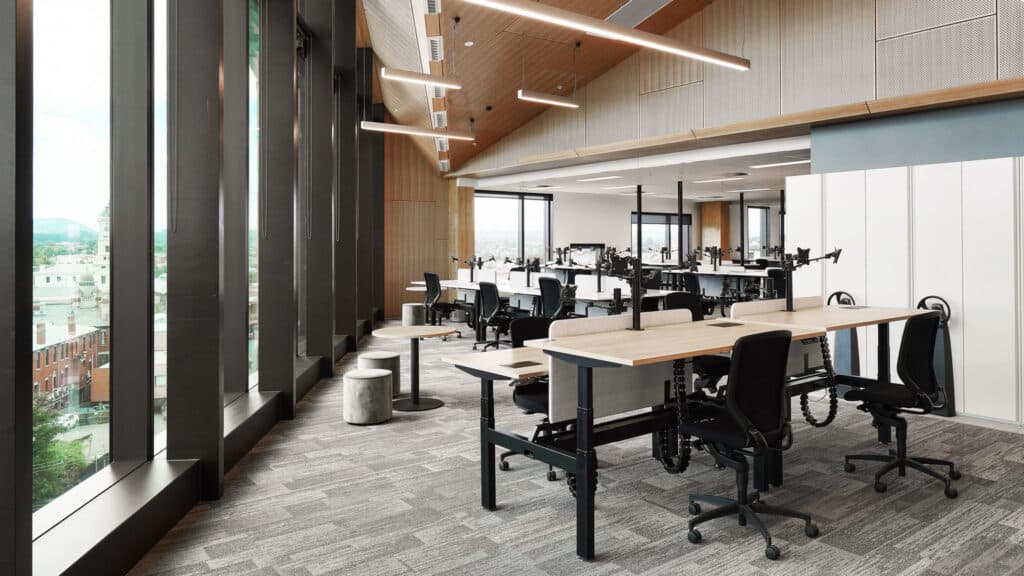
1.3 Employee experience and impact on retention
We’re all aware of how dramatically the employee mindset has changed since the pandemic.
Today’s employees need more than just a salary. They crave experiences and environments that inspire and motivate–because unless you convince them that it’s all in their best interests, they’re unlikely to give you their best.
A strategically designed office can positively transform these experiences, boosting morale and fostering loyalty among your staff.
By putting their well-being at the forefront of your workplace strategy, you’re curating a space that people will be excited to work in. This not only enhances productivity but also positions your company as a top choice for talents.
Office Lease Due to EXPIRE?
1.4 Resource optimisation for efficiency
We’ve never worked in a more competitive, demanding, or high-stakes arena, and efficiency is one of the keys to getting ahead.
Every square foot of office space and every resource at your disposal needs to be optimised.
A well-thought-out workplace strategy ensures that no space goes to waste, even if this means making certain spaces and furnishings highly adaptable.
This warrants a deep understanding of your company’s operational needs and future growth projections, and the ability to predict where you’ll be, say, five years from now.
Then, by aligning these insights with the design, businesses can ensure that each area of the office serves a clear, functional purpose, leading to significant cost savings and a streamlined work environment.
The idea is both to facilitate and accommodate your growth and change projections.
1.5 Digital workplace integration
Globalisation is an undisputed reality–the world is connected. So much of business unfolds online, and the line between the physical and digital workspace has increasingly blurred.
A contemporary office is more than desks and chairs; it’s about ensuring seamless integration of technology that is both state-of-the-art and subject to rapid evolution.
This means creating spaces that support video conferencing, cloud-based collaboration tools, and other digital platforms essential for modern business operations, but also planning for regular updates in line with technological progress.
By weaving technology through the fabric of your office design, you can ensure that your teams are players on the global stage, foster collaboration, and offer employees the tools they need to keep pace with gold standards.
You need to offer a space that’s not just tech-friendly but tech-forward, no matter where in the world you come from.
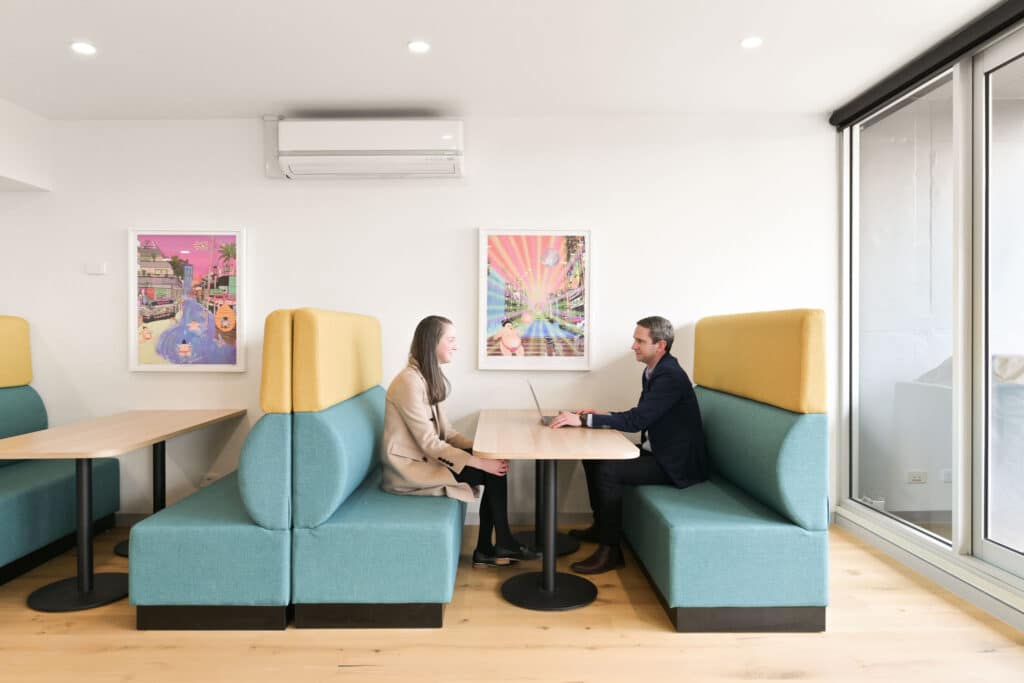
1.6 Collaborative ecosystem
Collaboration is the engine that drives innovation for your brand. A strategic workplace design recognises this and prioritises spaces that facilitate teamwork.
This could mean open-plan layouts that encourage spontaneous interactions, dedicated brainstorming pods, or even informal lounge areas for team huddles on the fly.
To get this right, the psychological impacts of spatial and furnishing designs should be noted, as should the unique dynamics of your teams and organisational structure.
When the physical environment supports teamwork, from close-knit teamwork spaces to interdepartmental social areas, it amplifies the collective intelligence of the workforce. The result, a shattering of silos for more innovative solutions, with more profitable outcomes.
1.7 Adaptive and resilient design
Change is the only thing that’s constant in business. Whether it’s shifts in market dynamics, technological advancements, or internal organisational changes, you need to be agile.
An adaptive office design ensures that the workspace can pivot and adapt to these changes, even when they’re really unexpected. This might involve modular furniture setups, movable partitions, or tech installations that are easy to upgrade.
By building adaptability into the design, you can ensure that your office remains functional, relevant, and ready to meet the inevitable challenges of tomorrow.

